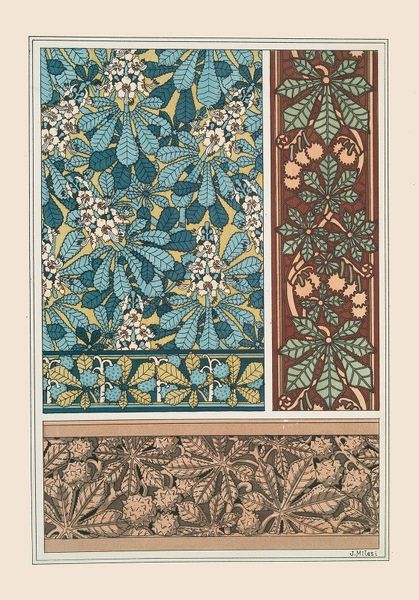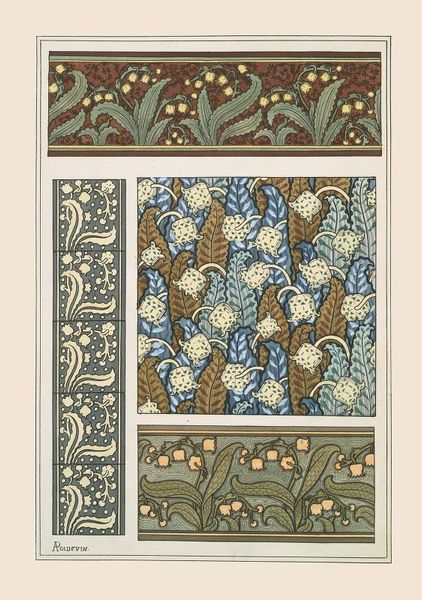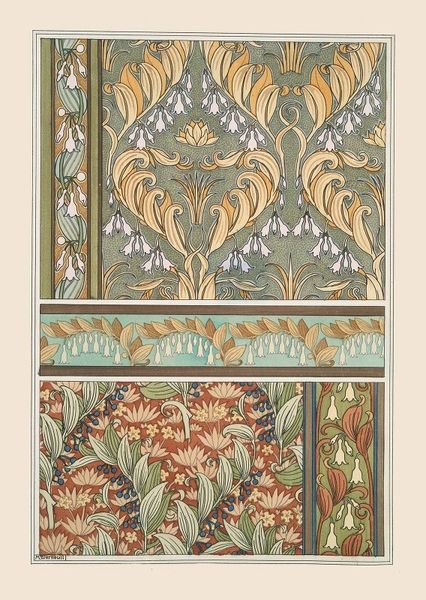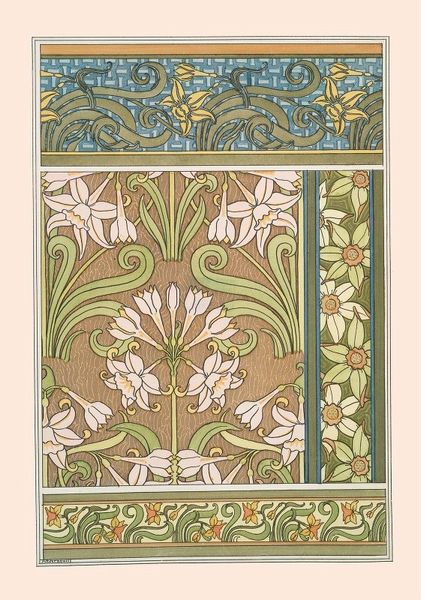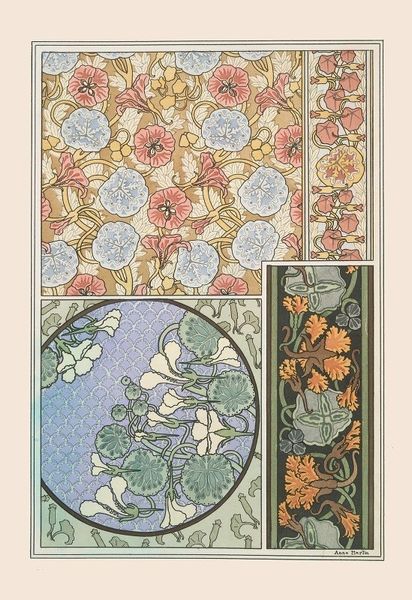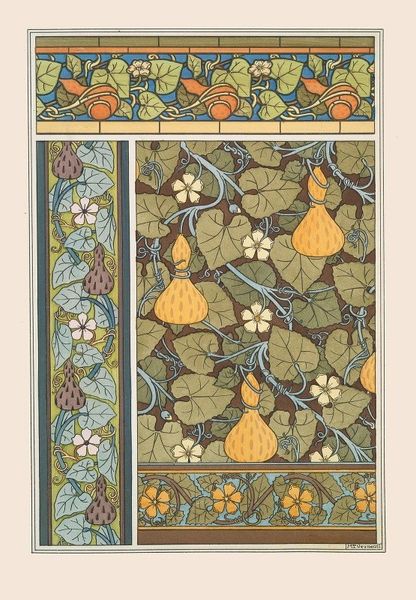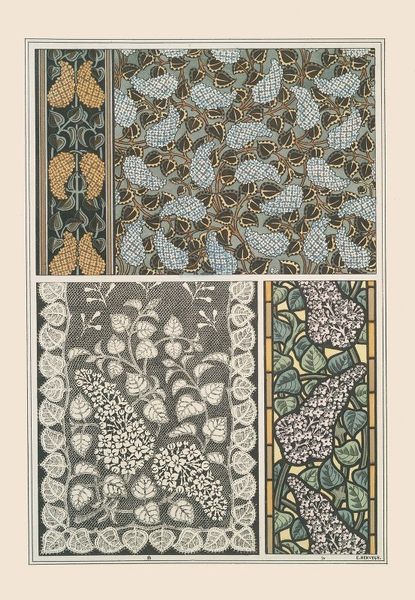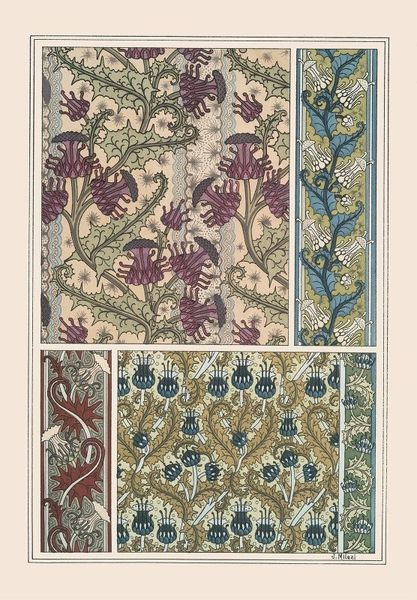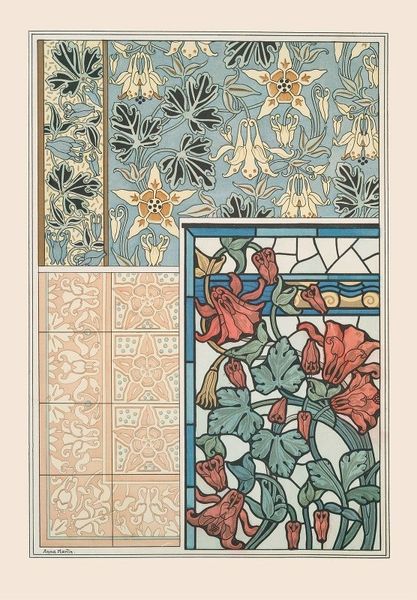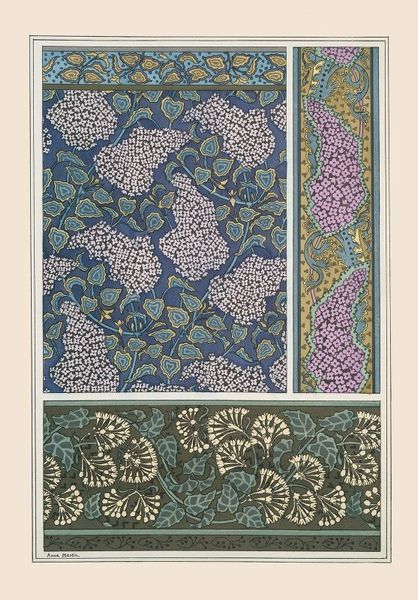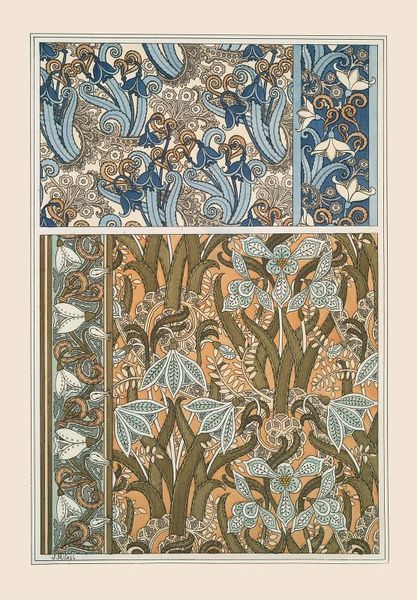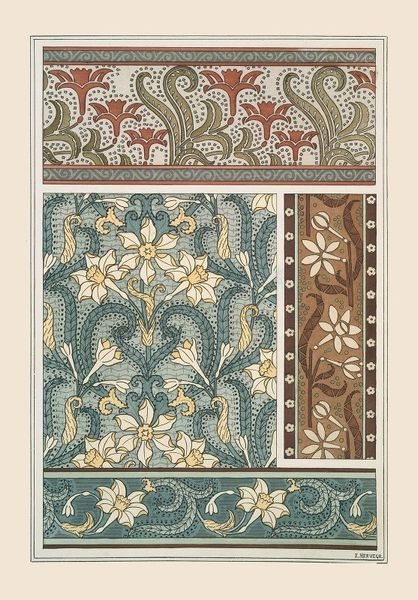
drawing, graphic-art
#
drawing
#
graphic-art
#
art-nouveau
#
decorative-art
Copyright: Public Domain: Artvee
Curator: Let’s turn our attention to "Glycine 2," a drawing created by Maurice Pillard Verneuil in 1896. My first thought is how it captures a quintessential Art Nouveau aesthetic with its emphasis on flowing lines and natural forms. Editor: It does radiate tranquility. The muted color palette feels like a deliberate choice to soothe the senses. And the multiple panels, the shifts in layout. You could extract any little area of this composition and make it into something striking. Curator: As a design, it embodies the decorative arts' ambition to permeate everyday life. Verneuil aimed to democratize beauty. He created designs that could be applied across a range of functional objects and structures, and he really did aim to elevate design in society. Editor: And thinking about this ambition of integrating design into everyday life, the very choice of glycine as a subject feels interesting. Wisteria is vigorous; it sprawls and climbs, it wants to transform things. I wonder how Verneuil thinks about this integration of wild nature with these controlled and regimented designs. Curator: That's a keen observation! The choice to depict wisteria is far from arbitrary. This captures a period when artists turned to the natural world for inspiration, mirroring larger societal fascinations. It's not merely botanical illustration, though; it symbolizes transformation. Editor: Definitely. It also highlights a recurring theme of women's role in shaping this visual language. Did he design the artwork for a particular space, or clientele, specifically women? Is the art feminized because wisteria is involved? Curator: While the specific patronage for "Glycine 2" remains somewhat veiled, it's relevant to understand that Verneuil’s pattern books widely circulated. His goal was to provide models for artists, artisans, and even manufacturers to interpret and adapt. His patterns decorated feminine items of luxury: jewellery, mirrors, vases, furniture, wallpaper. I suggest Verneuil made artwork available for a public of women to shape their daily lives. Editor: Seeing "Glycine 2" through the lens of decorative art is powerful. We get an echo from Verneuil of social empowerment in a decorative artwork that can give a template to artisans and workers today. Curator: Indeed. By understanding the historical and cultural currents, we've peeled back the layers to better see the essence of "Glycine 2," and what makes it endure.
Comments
No comments
Be the first to comment and join the conversation on the ultimate creative platform.
